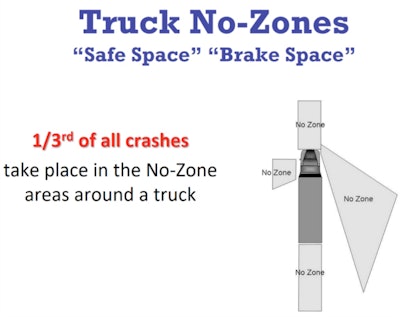
Talking to veteran truckers made one man change the way he drives.
That man is Dr. Garry Gray, an associate professor in the Department of Sociology at the University of Victoria in British Columbia, Canada. He altered his highway habits after speaking with truckers — 158 experienced truck drivers to be precise — and he wasn’t just engaging in casual conversation. The professor was working, talking to truckers as part of the research he presented online Wednesday, Jan. 29.
 Dr. Garry Gray, associate professor in the Department of Sociology at the University of Victoria in British Columbia, Canada
Dr. Garry Gray, associate professor in the Department of Sociology at the University of Victoria in British Columbia, CanadaGray is the lead researcher and author of A Bird’s Eye View of Driving Safety Culture: Truck drivers’ perceptions of unsafe driving behaviors near their trucks, which gives voice to truckers’ observations and complaints about most of the rest of the motoring public. His research involved talking to drivers from 30 states and three Canadian provinces at truck stops in New York, Connecticut, and Massachusetts.
These were veteran drivers who shared their opinions with Gray. Most were long-haul company drivers (128 vs. 30 owner-operators) with an average of more than 16 years experience on the road, and averaging 2,508 miles a week.
From analyzing those conversations, Gray created a list of 20 unsafe driving behaviors four-wheelers engage in that increase the possibility of accidents and highway fatalities. He also came up with one conclusion: “New (non-trucking) drivers should receive truck driver awareness training as part of their licensing process and that public health campaigns be developed on the risks of driving near trucks.”
Gray suggested that a day’s worth of training about sharing the highway with trucks be part of driver education programs. “You don’t get (a CDL) without the car license, but people in cars are not trained with trucks.” He said the truckers he spoke with want “more training, not just for truck drivers but for people who are traveling around them. They want everyone on the road to have a better understanding of what’s involved with truck drivers, how they operate, how they’re not able to stop as quickly.”
Those top 20 unsafe driving behaviors and the number of times mentioned by drivers include:

- Cutting off a truck (88)
- Using a cell phone while driving (80)
- Following truck too close (58)
- Improper lane changes (52)
- Unsafe highway exiting at off-ramps (43)
- Unsafe highway merging at on-ramps (36)
- Texting while driving (34)
- Driving in truckers’ blind spots (34)
- Speeding (31)
- Not using turn signals (23)
- Reading while driving (17)
- Using computers while driving (16)
- Passing trucks on the right side (13)
- Personal grooming (11)
- Driving too slow (7)
- Passenger distractions while driving (7)
- Eating and drinking while driving (4)
- Watching DVDs while driving (4)
- Pulling in front of a truck when entering traffic (4)
Gray said his research found truckers attributed the bad driving behaviors of other motorists to three primary causes:
- 27.2% are purposely taking a risk knowing they are doing something wrong
- 26.6% are simply not paying attention
- 19.6% lack knowledge of the risky behavior in which they are engaging
The professor has considerable empathy for truckers. He said, “I can only imagine how frustrating it would be to continually have these experiences and people not understanding what’s going on.”
He said he wanted his research to also give voice to truckers’ concerns as they are often overlooked, and poorly represented in the popular press when truck-related accidents occur.










